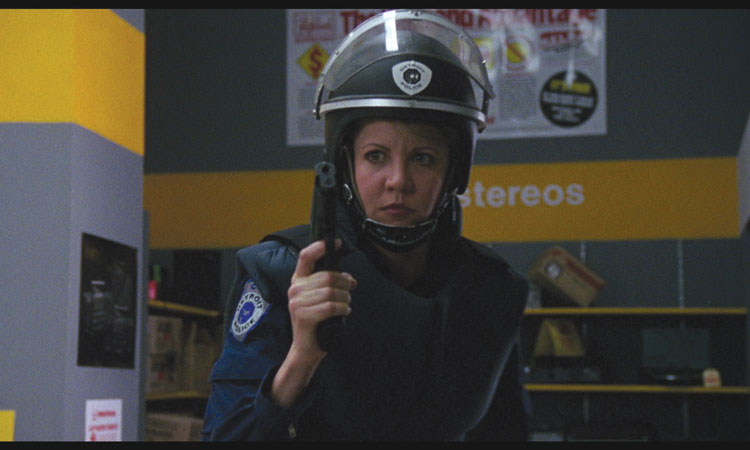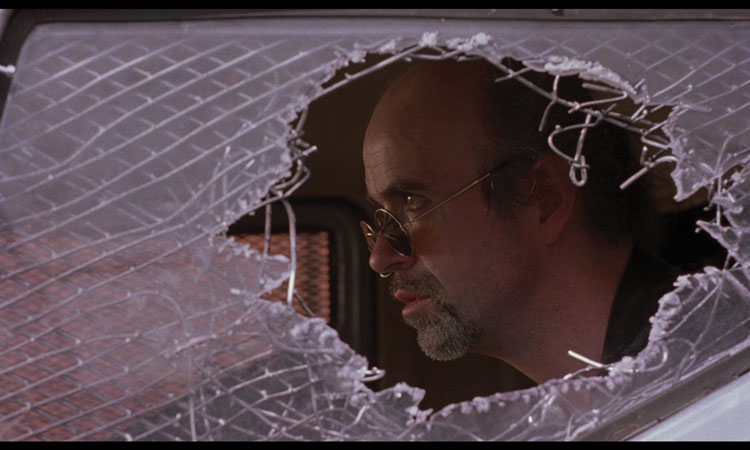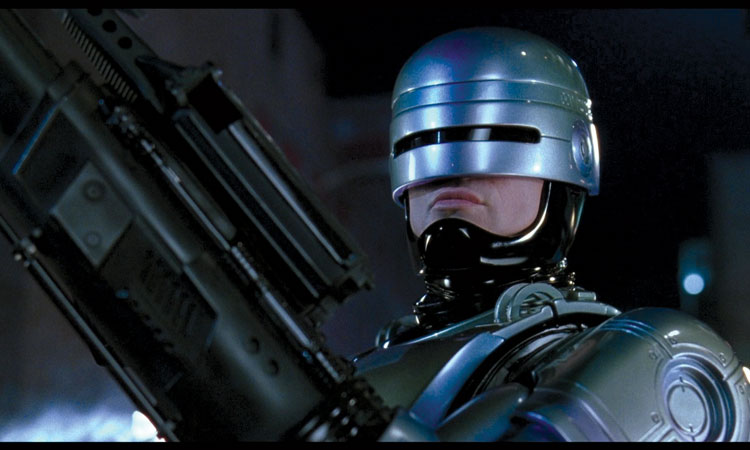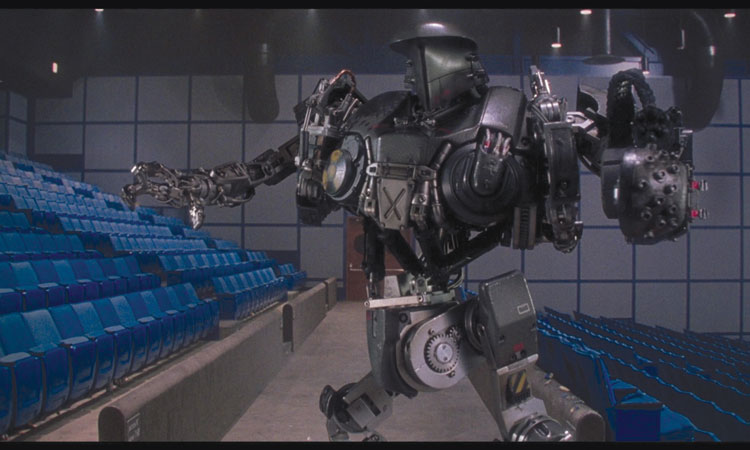When Dutch director Paul Verhoeven let RoboCop roam the dystopian city streets of Detroit in 1987, the result was a smart satire on corporate greed, consumerism and rebirth that explored a cyborg super cop’s lingering humanity. It became an instant science fiction classic.
When a sequel was greenlit and Verhoeven passed, there was seemingly only one man suited for the job – the same filmmaker that George Lucas had appointed to expand his Star Wars universe a decade earlier.
“The Empire Strikes Back was a broader adventure that introduced all new characters, so your mind went wider as opposed to just going again,” considers Mark Irwin, who was the cinematographer on RoboCop 2. “Irvin Kershner wasn’t afraid of the rules… the first RoboCop laid it all out and so RoboCop 2 had to take the next step, which it kind of did in a more sinister way.”
Indeed, the sequel, which was initially written by comic book supremo Frank Miller, took the original film’s ‘we can turn a man into a machine’ premise one giant step further. Now, OCP, the infamous conglomerate behind the birth of RoboCop, has turned their corporation into a government, privatising the Delta Police Force and increasing street crime to their advantage by controlling the highly addictive drug Nuke-all to rally support for their drastic urban redevelopment project. With law enforcement on strike in retaliation to having their pay slashed by OCP, RoboCop (Peter Weller) and his faithful partner Lewis (Nancy Allen), remains the only police presence on the beat.

Amongst the ravage and turmoil of this dystopian society is Nuke drug cartel leader Cain (Tom Noonan), who wants to retain his grip in the underworld, along with his ragtag group of cult followers that include ambitious adolescent protégée Hob (Gabriel Damon) and faithful sidekick Angie.
“I remember Irvin [Kershner] and I had decided, because of her actions and the group of outlaws she was hanging out with, that perhaps she was a runaway,” says Galyn Gorg, who played Angie, to SciFiNow. “It’s the same when young people join gangs – looking for a family; [they were] dysfunctional but she found some sort of solace there.”
The character also found solace in Nuke. “I remember Irvin was talking about how we would place it on our neck and they’d put in a sound effect so it would convey the feeling of it being released into your blood stream, so there was a systematic way and a continuity with the characters taking this drug,” continues Gorg. “It reminds you of a heroin or crack addict, when you get into that kind of world that your characters are in with the despair… inebriating yourself and trying to find a good feeling and get a relief from the pain.”
Working alongside the actress was, then, 13-year-old actor Gabriel Damon as Hob, who has ambitions to fill Cain’s shoes. “Onscreen he looks like a little devil but in real life he was the sweetest guy and we’d just sit and chat in-between takes,” recalls Gorg. “His mum was around, and they had the teachers in so I think it was a pretty relaxed set for him and he was having a pretty easy time.”
Embodying disturbed prime antagonist Cain was veteran character actor Tom Noonan who had previously immortalised the fearsome Tooth Fairy in Michael Mann’s Manhunter. “Cain obviously had some real psychological issues as a human being – I guess you would call him a sociopath because he seemed to have lost all empathy,” considers Gorg. “The way he would smile with this smirky evil grin –you just know the person’s sick in the head but Tom played it so subtly.”

When SciFiNow speaks with Tom Noonan he hints that he originally wanted to add more colour to the mild-mannered narcotics leader, who saw himself as a bit of a messiah figure.
“I just started taking Nuke and laughing until I couldn’t stand up… I thought it was great, but they didn’t like that and they also thought my costumes were too flamboyant,” he recalls. “They didn’t like that I was wearing a priest’s cassock in one scene and I remember they reshot it with a different costume, all of which was not fun for me as I liked the costumes a lot. I had a lot of fun shooting it most of the time [but] they wanted me to be more serious and not so funny.”
After Cain is critically wounded during a drug raid, OCP preserves his brain and transplants it into a towering, heavily armoured and seemingly undefeatable monster machine that’s controlled by Nuke and presented as ‘RoboCop 2’. The persona of Cain is retained via a retractable CG monitor screen, which depicts the character’s animated face, however Noonan was disappointed with the results of this.
“It was weird because they flew me to Marin County in California to do a laser scan of expressions of my face but when they put me inside that ‘RoboCop 2’ they really exaggerated all of those expressions and I thought it was awful,” he admits. “It didn’t look like me, it didn’t sound like me and I thought ‘why did you hire me?’ I gave them the expressions that I would’ve used [but] they didn’t use them, [and I felt] they overdid them.”
“I think they wanted more screen time with him physically rather than as a computer-generated kind of element because it’s so much stronger,” considers Mark Irwin. “He and Frank [Miller] were almost the same person: they were tall, skinny and they’d always be talking… I think Tom was looking out for more than just the story itself, but his involvement in the screen time.”
There were tensions on the set too, particularly between original writer Frank Miller and the producers. “Frank was being pushed to rewrite it as Ed Neumeier had created the characters. Kersh[ner] kept having ideas and Peter Weller had a lot of opinions,” continues Irwin. “In the end I think Frank brought the drug aspect to it and, along with the kid [Hob], there was a lot of darkness that everybody was concerned about.”

In addition to this, the sequel attempted to up the action ante, with a climatic fight-to-the-death sequence between Cain and RoboCop that interspersed intricate miniatures and stop-motion special effects into the live action.
“We were shooting gigantic Vista Vision plates in which the combat with the Cain robot had gigantic depth of field to allow for all the go-motion opticals that were going to be done by Phil Tippet,” elaborates Irwin. “So, the schedule was ambitious and then to add to that Kersh was in a lot of pain with gout so basically there was a lot of yelling!”
Reportedly contributing to these production woes was the actress who portrayed Dr Juliette Faxx, the calculating psychologist behind the criminal Cain/RoboCop 2 project. “She ended up doing these power trips,” reveals Irwin. “We were filming in downtown Houston and had to be off the streets by 5.30am for them to open at 6am. At 4am she decided she couldn’t say her line and demanded that Frank Miller come down straight away. So, Frank shows up in his pyjamas and she says to him: ‘I don’t say this line! Rewrite this line. This line is terrible!’ Miller starts scribbling and handing her these pages and it goes back and forth… finally she says: ‘Okay, fine! I’ll do that line!’ Now, it’s minutes till opening up the street and the line’s gone from: ‘You’re nothing but a machine!’ to: ‘You’re nothing, nothing but a machine!’”
While the original RoboCop dealt with Alex Murphy’s transformation from man to machine and explored how the cyborg grappled with his lingering humanity, RoboCop 2 disappointingly dispenses with this conflict early on to focus on the cartoon carnage. As a result, the film suffers from a strangely subdued quality that is more about the megalomaniac corporate ambitions of OCP than our titular character, while the biting satire of the original is too on the nose this time around.
“It’s always difficult to do the number two,” considers Irwin. “[Producer] Jon Davison had his views on to how to make it as strong as it was, while Kersh just kept pushing for something better; so it travelled in different directions. I think as a result it has many layers [but] the film made a strong statement.”

“The part I like about it is the political commentary about the corporations, the police and people picketing,” says Galyn Gorg. “It’s a reflection of society and corporate greed and then you’ve got the underbelly of the dark market and the drugs… it was making an interesting social commentary. However, I’m a little hesitant with violence and I think RoboCop 2 was really violent.”
Conversely, Tom Noonan admits to having never seen the film in its entirety. “I’ve seen bits of the movie. I think it was pretty good, I just thought it could have been funnier,” he says. “What’s great about the original RoboCop was how funny it was.”
Despite all the behind-the-scenes drama and the uneven tone, certainly an element that does hold up in RoboCop 2 is the impressive stop-motion action sequences, painstakingly pioneered by stop-motion master Phil Tippett. “Phil is one of the innovators that was kind of at the cusp of film and then digital CG. He was instrumental in writing the future that is now our collective past,” acknowledges Irwin.
RoboCop 2 is available on Blu-ray now from 20th Century Fox Home Entertainment.
